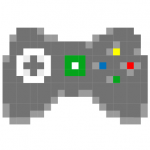The Study of Games is Multi-Modal
B uoyed by digital advances and the Internet, digital games are now generating more player involvement than ever before. They are designed not only to entertain, but to educate, train, enhance social interaction, simulate real-world scenarios, promote health and fitness, engage business customers, and add a gamified layer to our daily routines. The study of games itself is also ever morphing, having undergone rapid change since its introduction as an academic field in 1990 (Ruberg, Bonnie). In a field that is ever evolving a question of academic output is raised: “How do researchers study something as amorphous as games and when they do, what does it look like?”
For a research syndicate such as IMMERSe there is no one answer. This is due in part to the vast varieties of games capable of being studied. Over its eight year run, IMMERSe contributors completed research in the areas of mobile games, virtual worlds, gambling games, simulation games, augmented reality games, and the full rich panoply of entertainment gaming. Within each game there also exists many components and technologies worthy of study. The modes guide participant’s research, often changing their focus drastically and shaping their interpretation of the media.
Unlike other research bodies, the outputs from the IMMERSe network are not all congruent. In trying to understand it, IMMERSe researchers turn to different medias for inspiration and in turn produce different medias. Results of the network have ranged from published work in journals, anthologies, and books; to physical game development; to the exploration of research findings in presentations or conferences. We believe these findings are best presented in this eclectic state, as a true reflection of the breadth of the study, and the multi-faceted and interdisciplinary nature of this research.
Ruberg, Bonnie. Our Glass Lake. http://ourglasslake.com/ Accessed 1 May, 2019.



